During the 1950s, the economy and suburbia were on the rise. This era is known as the “Golden Age of Television,” when iconic stars and popular shows dominated the small screen.
During the 1950s, the TV set became more affordable and widespread, making it accessible to many households. Soon, it became the primary source of entertainment and information for families across the nation.
The radio show transitioned to television, marking a significant technological shift. Television added the visual element of storytelling and entertainment, making it the perfect reason for families to come together.
Here’s a fun fact to think about before we continue our journey through the 1950’s television history:
The first TV was made in 1927. However, in the 1950s, only 9% of American households had a television; by 1959, 86% owned one!
The question was, what were people watching during this time? What TV shows defined this era? Did they spend their Saturday night watching TV shows?
Past generations were blessed with many entertainment options- and that’s a fact.
A flock of young actors emerged during that time, and musical legends such as Elvis Presley dazzled the world with their iconic music videos that left everyone speechless. It was a transformative decade for the film and television industry, marked by the emergence of new genres, like drama, sitcom, thrillers, and science fiction.
So, let’s go through the most influential TV programs of the 1950s so you can choose your favorite one!

Credits: @edufantin / Pinterest
Key Takeaway
- In the 1950s, television became more affordable and widespread, transforming into a primary source of entertainment and information for American households.
- The rise of TV led to the emergence of iconic shows across various genres, including variety shows, westerns, dramas, sitcoms, and children’s programs.
- Major networks such as NBC, CBS, and ABC significantly shaped TV content and cultural norms during this era.
- The 1950s laid the groundwork for modern television, showcasing creativity, talent, and the enduring appeal of storytelling that continues to influence the medium today.
The Rise of TV in American Households
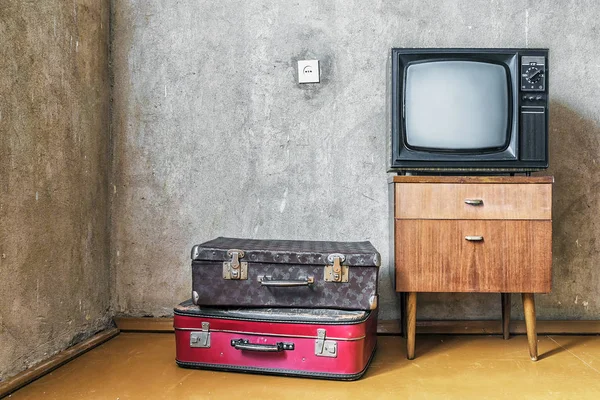
Television provided easy and convenient entertainment for families, especially in the evenings. After a long working day, people could watch their favorite TV show and enjoy some interesting content before bed.
During the golden age of the small screen, major network channels such as NBC, CBS, and ABC played a significant role in shaping TV content. These channels produced and distributed a large portion of TV programming, investing heavily in creating high-quality shows that reached a wide audience.
The major networks set the standard by determining the length of shows, such as 30-minute sitcoms or 1-hour dramas. They also created punctual programming schedules, which allowed viewers to plan their TV-watching habits.
By controlling the shows, TV series, ads, and music, major networks played a key role in shaping cultural and societal norms, further strengthening this sense of connection.
With the introduction of color TV, the television industry took a thrilling leap forward. This new technology offered viewers a fresh and captivating experience, making programs more engaging and lifelike.
As a result, programs began to incorporate more colorful sets, costumes, and special effects, sparking a sense of excitement and novelty among the audience.
During the early years of television production, creating shows in color required a significant investment in equipment and technology.
However, the effort was worth it, as the resulting content was more vibrant and visually appealing to viewers. This shift led to a surge in the popularity of TV shows, comedy movies, and other forms of entertainment among audiences.
In the 1950s, TV shows were widely watched nationwide, and different categories of shows were created to cater to everyone’s preferences. We will explore the most popular shows in each category.
Variety Shows
During the 1950s, comedy TV shows experienced a surge in popularity with the rise of variety shows and sitcoms. Comedians and writers used different styles and narratives to create diverse TV programs.
Variety shows featured a mix of performances and acts, such as musical performances, comedy sketches, magic acts, celebrity guest appearances, and so on.
Many of them were filmed in front of a live studio audience, which added more energy to the show.
The Red Skelton Show
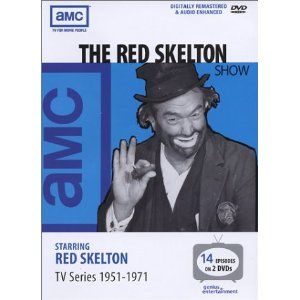
Source: amazon.com
This was one of the most popular variety shows that aired on NBC in 1951.
It featured comedian Red Skelton, a popular radio host who transitioned to television. The show included comic sketches, monologues, and pantomimes, representing Skelton’s various talents. It was broadcast on Sunday nights at 08:30 p.m.
Some memorable characters were made thanks to this show, such as Clem Kadiddlehopper and Freddie The Freeloader, which gained iconic status in the show, which was known for witty dialogues and family-friendly content.
The Red Skelton Show entertained audiences for nearly two decades and is known as one of the most successful variety shows of its time.
Your Show of Shows
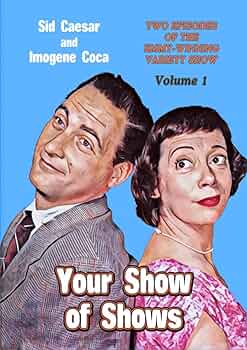
Source: amazon.com
This influential American television variety show aired on NBC in 1950 and featured Sid Caesar and Imogene Coca and a talented cast. It also had writers such as Mel Brooks and Carl Reiner.
The show was known for its innovative comedy sketches, including parodies of movies and other television shows. Additionally, it included musical and dance performances and had guest performers.
Due to its high-quality writing and strong performances, it became one of the most memorable shows of its time and influenced many later variety shows.
It set a high standard for television comedy with its high production quality.
The Colgate Comedy Hour

Source: kngdmond/Pinterest
This timeless variety show aired live in 1950 on NBC. It featured comedy acts and live performances with different guest stars featured weekly. Some of the most notable were the comedy duo Abbott and Costello and performers like Frank Sinatra.
The show was hosted in a rotating format by different comedians, each with a unique style. Some of the most popular hosts were Dean Martin, Eddie Cantor, Jerry Lewis, and Jimmy Durante.
This format kept the content fresh and engaging for viewers, offering a mix of comedy, music, and a variety of acts.
The Ed Sullivan Show
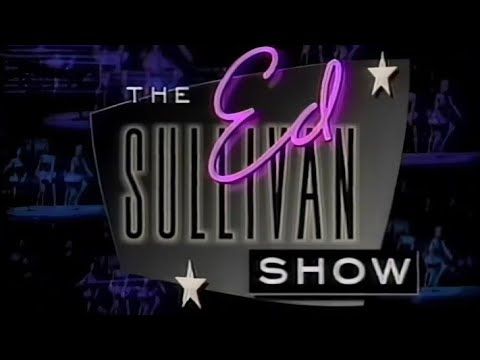
Source: youtube.com/Pinterest
One of television’s most popular variety shows was The Ed Sullivan Show, which aired on CBS from 1948 to 1971. The show was hosted by Ed Sullivan, known for his calm and straightforward demeanor.
It featured a variety of acts, such as musical performances, comedians, dancers, acrobats, and magicians, and helped launch and boost the careers of many performers, particularly in the music industry.
For instance, Elvis Presley appeared on the show three times, and The Beatles‘ appearance in 1964 is considered a landmark moment in rock and roll history.
Airing on Sunday nights, The Ed Sullivan Show became a beloved part of family viewing schedules, cementing its place as an iconic pillar of American television culture.
Arthur Godfrey’s Talent Scouts

Source: youtube.com/Pintest
The show, which aired in 1946, was a talent competition featuring new and emerging performers judged by Arthur Godfrey and his audience. Starting on radio, the show transitioned to TV in 1948 and aired on CBS.
Each performer was introduced by a talent scout who was a friend, relative, or mentor. The live audience judged the performers by applauding to determine the competition’s winner, adding an interactive element to the show.
One of the earliest live talent shows, it was a turning point in the careers of many young artists such as Connie Francis, Pat Boone, and Tony Bennett, who were discovered on the show.
Western
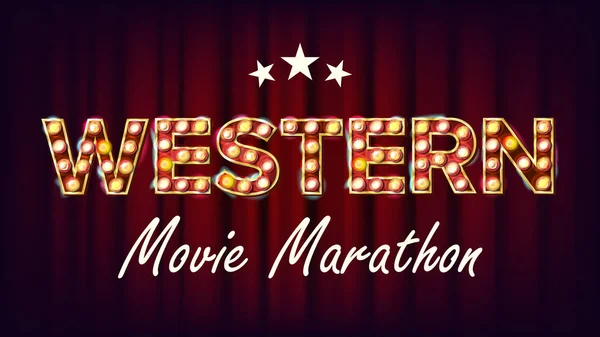
Clint Eastwood popularized Western movies in the 1950s, but the success of some amazing Western series helped make the genre a hit!
The Lone Ranger
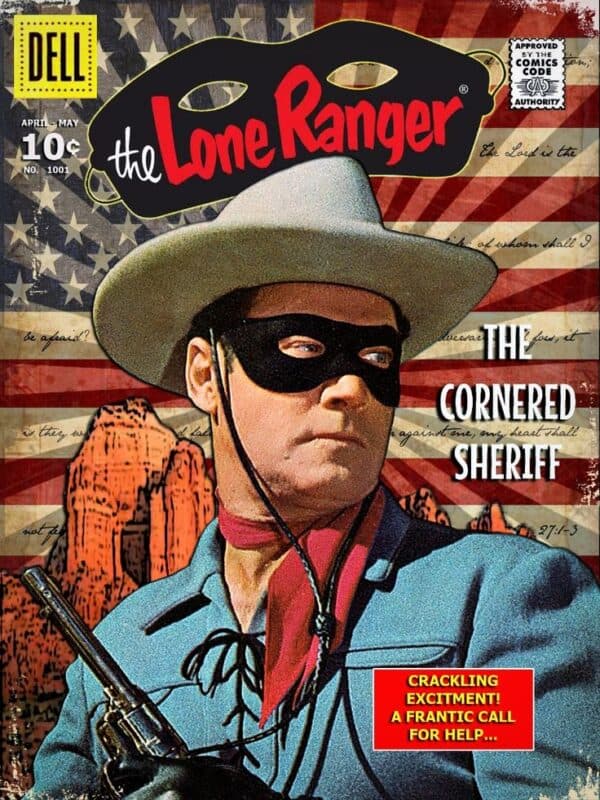
Source: lanellmillarkd3a.pages.dev/Pinterest
“Who was that masked man?”
If you’re a fan of Western series, you’ve probably seen The Lone Ranger. This series featured the adventures of a masked cowboy hero and his Native American companion, Tonto. Originally a radio show, it was adapted for television and aired on Tuesdays on ABC from 1949 to 1957.
The Lone Ranger is a key figure in American folklore because it represents the values of justice, integrity, and bravery. It is known for its exciting storylines and memorable music.
Wagon Train
This captivating American Western television series debuted in September 1957 and was broadcast on NBC and later on ABC. The show depicted the journey of a wagon train traveling from Missouri to California in the aftermath of the Civil War.
Each episode portrayed a unique story and adventure in the wagon, featuring various guest stars, themes, and characters. The series often touched on historical facts and social issues, such as the interaction with Native American tribes and conflicts between settlers.
It was renowned for its exceptional writing and high production values, with guest stars frequently appearing in episodes to keep the show fresh and appealing. The wagon train is considered one of the most prosperous Westerns of its time.
Drama
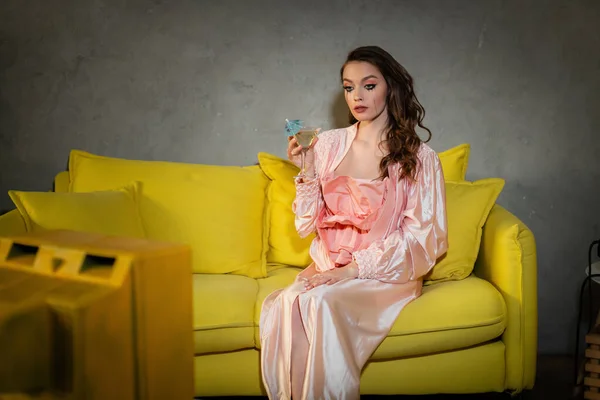
In the 1950s, television dramas became popular, featuring complex plots and characters that laid the foundation for future TV storytelling.
The Twilight Zone
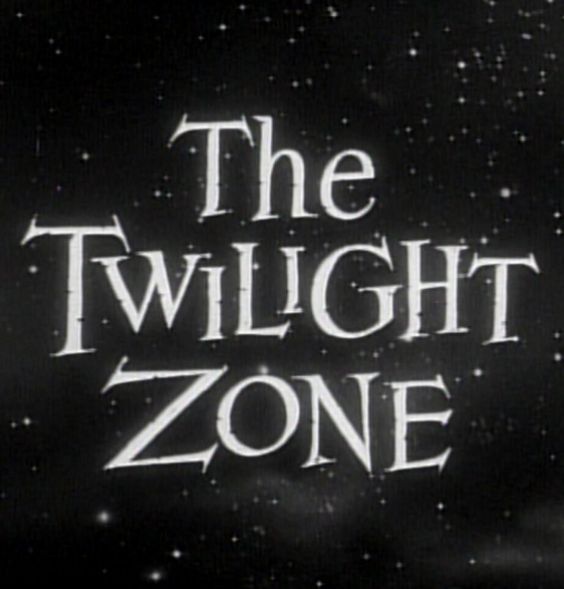
Source: buzzfeed.com/Pinterest
This television series, created by Rod Serling, aired on the CBS network from 1959. While often categorized as science fiction and fantasy, it also included dramatic elements and explored serious themes and social issues.
Each episode is a standalone story featuring different characters, settings, and plots. The series includes a mix of genres such as science fiction, fantasy, horror, and suspense and is widely known for its trademark plot twist endings.
Serling was the creator of the show, and he served as its head writer and host, providing insightful commentary at the beginning and end of each episode.
Alfred Hitchcock Presents
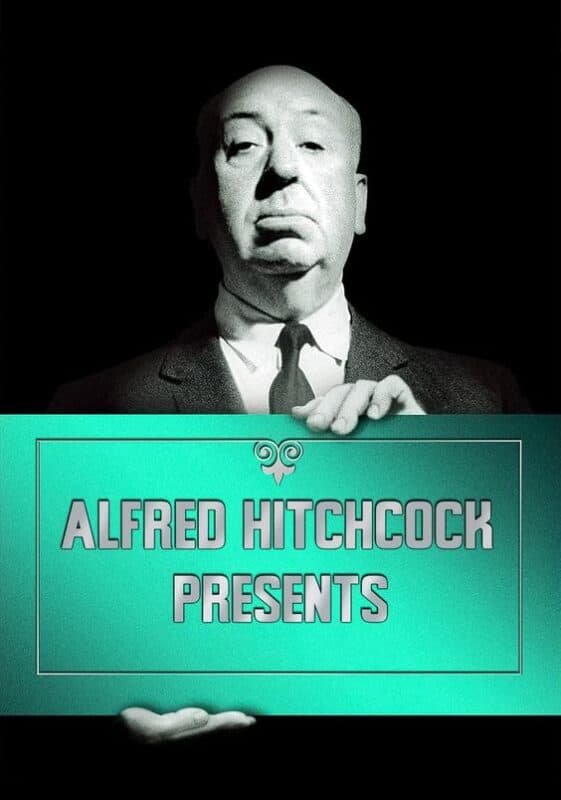
Source: imdb.com/Pinterest
The drama series was introduced by director Alfred Hitchcock and aired on CBS in 1955. The show was presented in an anthology format and consisted of suspenseful and thrilling stories that were a mix of mystery, suspense, crime, horror, and psychological thriller.
The series explored various themes, such as murder, betrayal, deception, and other morally ambiguous matters. It is renowned for its twist endings and surprises!
He provided an introduction and closing comment, similar to Rod Serling.
It’s no wonder these two series are a must-watch for every fan of suspense and mystery.
Perry Mason
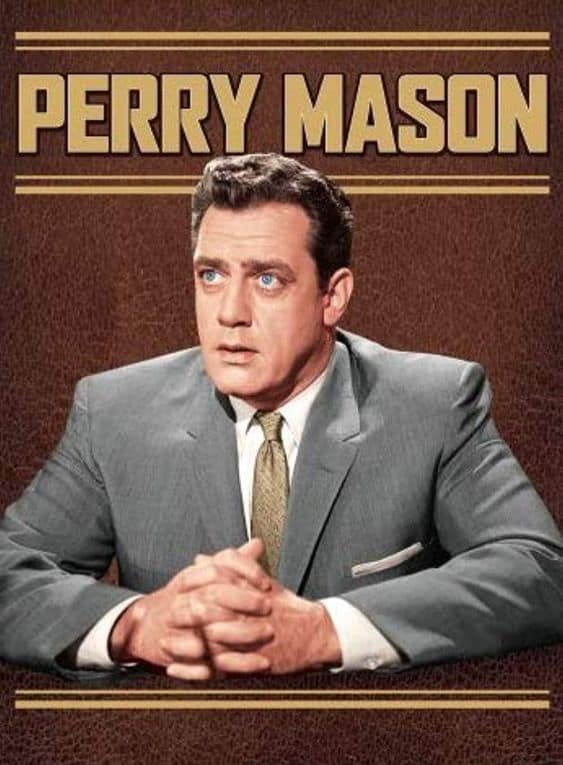
Source: imdb.com/Pinterest
This legal drama was aired on CBS in 1957 and is based on the novels written by Erle Stanley Gardner.
The show revolves around Perry Mason, a criminal defense lawyer known for his exceptional ability to solve complex cases. Perry’s clients are often accused of serious crimes, including murder, and his main goal is to uncover the truth and ensure that justice is served.
Each episode typically starts with a crime and Perry’s client being arrested. Perry and his team investigate the case as the trial progresses, piecing together evidence and unraveling clues to prove their client’s innocence.
Despite being a television series from over 60 years ago, it remains one of history’s most beloved legal dramas.
Sitcoms
The 1950s were a popular decade for situation comedies, which often revolved around family life, romantic relationships, and comedic situations, providing plenty of laugh-out-loud moments for family gatherings.
Some of the most popular TV shows of the 1950s marked the decade and set the stage for the format’s future success. Most of them had half-hour episodes, which remains the common length for episodes today.
The Adventures Of Ozzie and Harriet
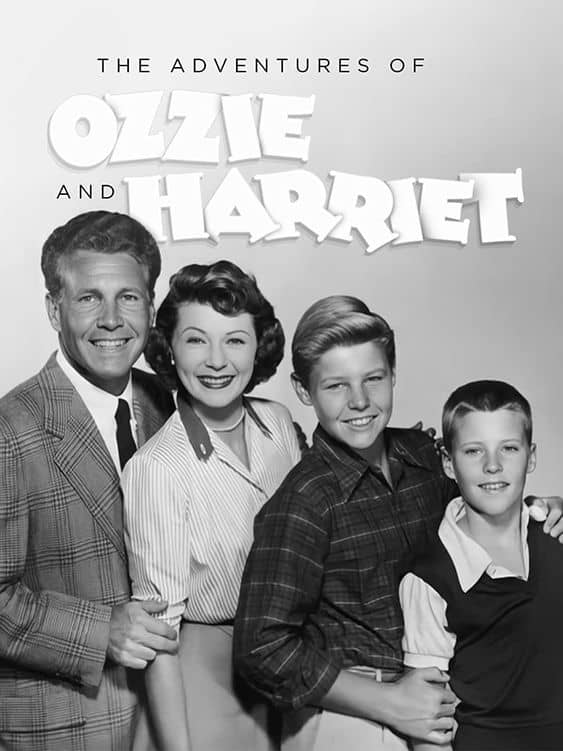
Source: imdb.com/Pinterest
This hit sitcom aired on ABC in 1952. It focused on the daily lives of real-life couple Ozzie and Harriet Nelson and their two sons in a suburban neighborhood.
The show depicted everyday experiences, humorous challenges, and the dynamics between parents and children. This sitcom represented the relationships, comedic situations, and adventures of the Nelson family and contributed to the popularity of the genre during that era.
“The Adventures of Ozzie and Harriet” was one of the longest-running sitcoms, with an impressive 435 episodes. The show began as a successful radio program in 1944 and later switched to television. Throughout its run, it featured guest appearances by various celebrities, which kept it fresh and entertaining.
Father Knows Best
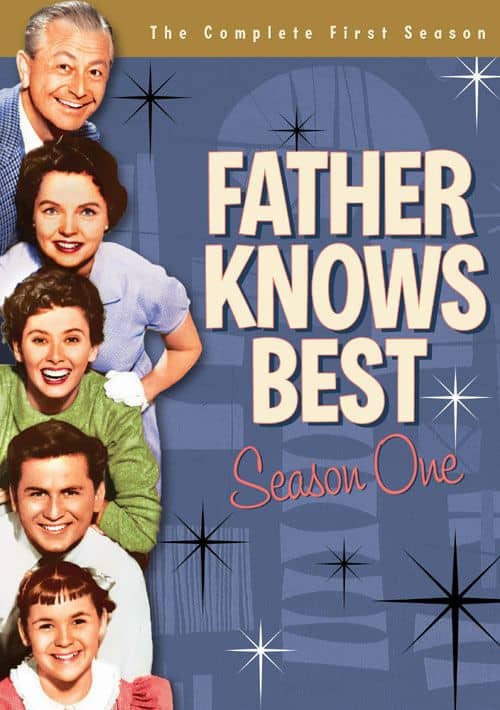
Source: classicflix.com/Pinterest
“Father Knows Best” is a classic sitcom that originally aired on CBS in 1954 and later on NBC. The show depicts the lives of the Anderson family and portrays a typical American family in the mid-20th century.
The Andersons live in a fictional town called Springfield and experience the ups and downs of suburban life. Jim Anderson is the family’s father, Margaret is his wife, and they have three children.
The show presents an idealized version of American family life in the 1950s, showcasing values such as respect, understanding, and support. Its heart is the moral and ethical lessons it imparts.
Jim Anderson serves as the family’s moral compass, embodying the role of a guide and authority figure, shaping the family’s values and decisions. The show’s central message revolves around the idea that “Father Knows Best,” providing a model of an ideal family.
Although the show was sometimes criticized as idealistic and unrealistic, it strongly impacted the family sitcom genre.
The Jack Benny Show

Source: closerweekly.com/Pinterest
This mix of sitcom and variety show features situational humor and recurring characters. It is centered around the comedic situations that arise in the life of the star, Jack Benny.
He is known for his lack of musical talent, particularly his violin playing, which became the show’s running gag. The show is known for situation comedy and sketches, musical performances, and celebrity guest appearances.
It originally began as a radio show and transitioned to television in 1950 on CBS. “The Jack Benny Show” is widely recognized as a classic and one of the most influential comedy programs in the history of both radio and television.
Children Shows
1950s TV shows included children’s programming as a key part of television schedules. Many children’s shows were produced during the 1950s, ranging from educational and informative content to purely entertaining.
We’ll go through some of the era’s most notable children’s shows.
Captain Kangaroo
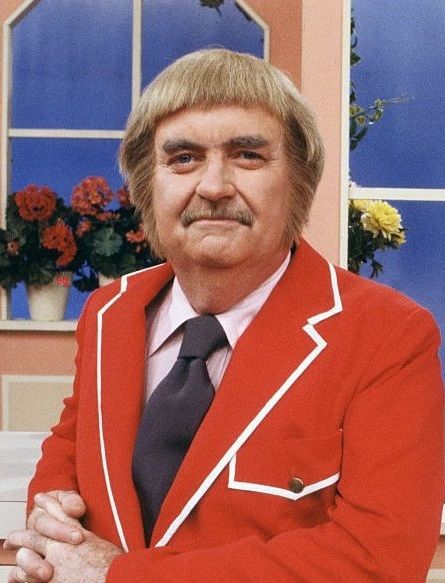
Source: doyouremember.com/Pinterest
Captain Kangaroo was a children’s television show that aired on CBS from 1955 to 1984, becoming the longest-running television show. Bob Keeshan, who played the friendly Captain Kangaroo character, created and hosted the show.
Captain Kangaroo was known for wearing a navy blue coat with large pockets and white trim. The show was a variety program that featured storytelling, music, cartoons, puppetry, and educational segments. It included memorable characters and emphasized positive values such as kindness, honesty, and respect.
Overall, the show is remembered as a classic children’s program that taught and entertained children for almost 30 years.
Howdy Doody
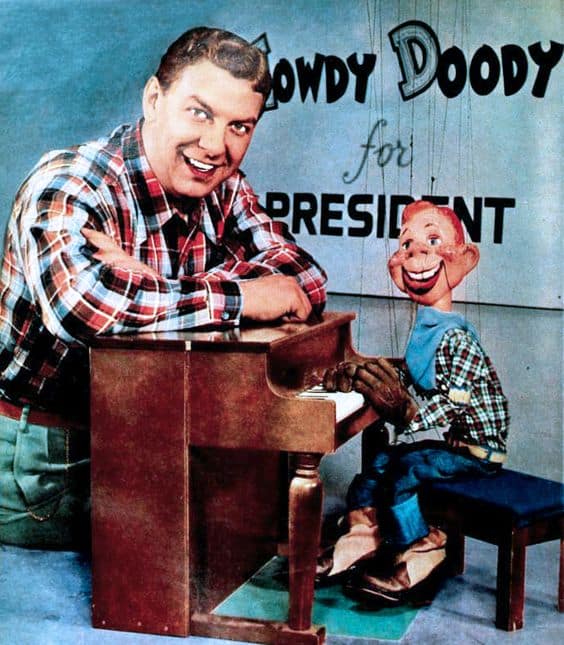
Source: 50plusword.com/Pinterest
“Say, kids, what time is it?” – “It’s Howdy Doody time!
This show, which first aired in 1947, was groundbreaking in terms of children’s programming. It was hosted by Bob Smith, who was also known as Buffalo Bob. Buffalo Bob interacted with the show’s characters and the audience.
The show’s central character was Howdy Doody, a marionette puppet with red hair and freckles. The show included a live studio audience of children, who were referred to as the “Peanut Gallery.”
These children participated in the show, supported their favorite characters, and were mentioned by name by Buffalo Bob. Howdy Doody’s puppetry and animation created an engaging and lively world for young viewers.
The show combined entertainment with educational elements, including moral lessons and values like honesty and friendship.
Howdy Doody was one of the most successful children’s shows of all time!
The Mickey Mouse Club
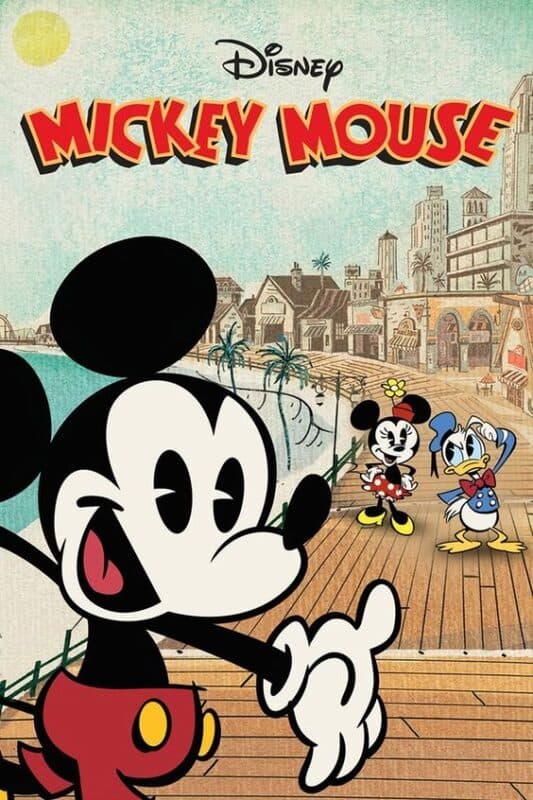
Source: boredpanda.com/Pinterest
In 1955, Walt Disney created a variety show that aired on ABC. This show was one of the most important early Disney television efforts. Jimmie Dodd served as the show’s musical director and host, and he wrote numerous songs that became highlights.
The program blended musical numbers, cartoons, and educational features and was a testament to Dodd’s creative skills. The Mouseketeers, a group of young performers who entertained viewers with their singing, dancing, and acting, were a central feature of the show.
Thanks to this show, Walt Disney established his brand on television and introduced kids to the magic of Disney.
Final Thoughts on 1950s TV Programs
The 1950s marked a transformative era in television, known as the “Golden Age,” where innovative shows across genres like sci-fi, westerns, and variety captivated audiences.
This decade saw television evolve from a luxury to a household staple, shaping cultural norms and entertainment habits. Iconic programs such as “The Red Skelton Show,” “The Lone Ranger,” and “The Twilight Zone” not only entertained but also reflected societal values and aspirations. Variety shows like “The Ed Sullivan Show” brought music and comedy into homes, launching the careers of legends like Elvis Presley and The Beatles. Later musical-comedy productions, such as Dr. Horrible’s Sing-Along Blog, echo this blend of humor, music, and storytelling in a modern format.
Meanwhile, family sitcoms such as “Father Knows Best” portrayed idealized versions of American life. The 1950s laid the groundwork for modern TV, showcasing creativity, talent, and the enduring appeal of storytelling that continues to influence television today. All in all, it left an indelible mark on pop culture.
Step back in time and rediscover the magic of television’s pioneering era!
